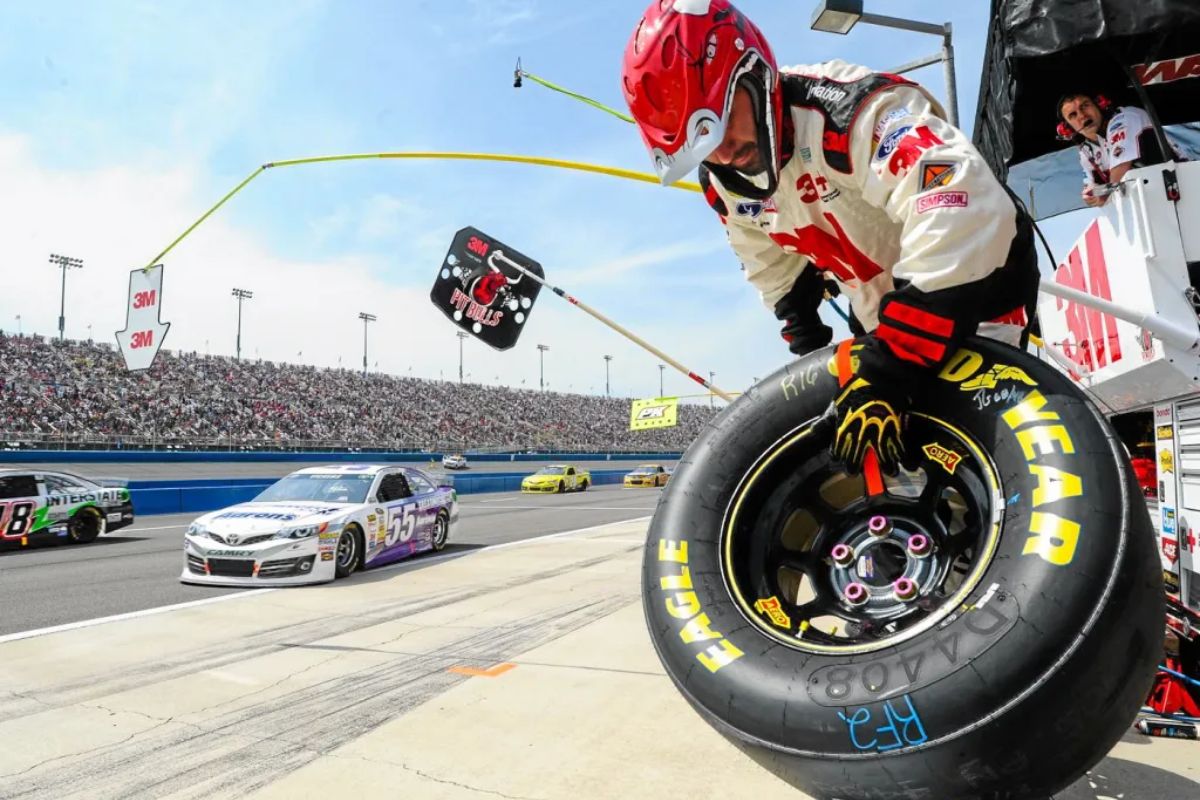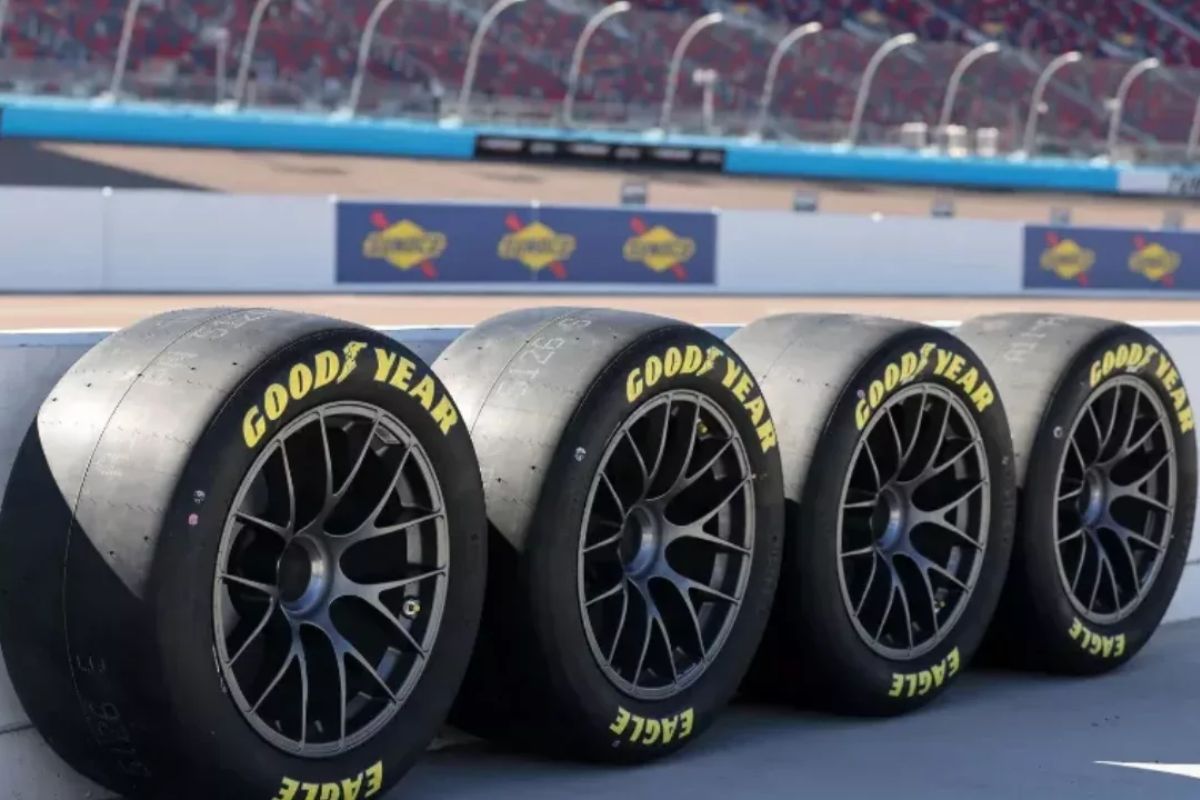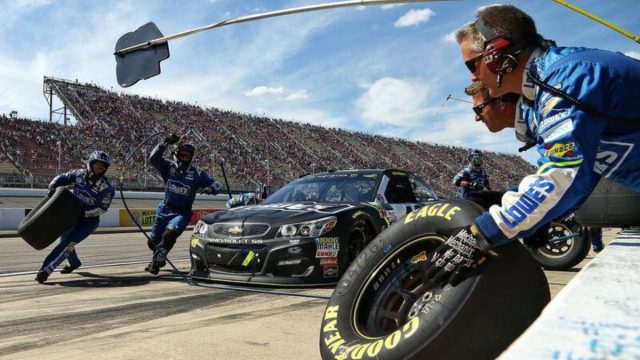Why NASCAR Drivers Choose Flat Tires: NASCAR drivers strategically opt for flat tires to gain a competitive edge in races. Flat tires offer enhanced traction, improved cornering precision, and help minimize tire wear while maintaining consistent performance on the track. By strategically choosing flat tires, drivers can navigate corners with more control and efficiency, ultimately enhancing their chances for success on race day. Understanding the science behind tire choices in NASCAR reveals a wealth of strategic advantages that go beyond the surface.
Key Takeaways
- Flat tires increase the contact patch for maximum grip and traction on the track.
- Bald tires provide consistent performance throughout races, aiding in cornering at high speeds.
- Optimal traction from flat tires enhances heat dissipation and feedback for precise adjustments.
- NASCAR drivers strategically choose flat tires to improve cornering ability and race longevity.
- Efficient heat dissipation and clearer feedback help maintain stable performance and competitive edge.
NASCAR Tires: More Than Just Radials
NASCAR Tires: Elevating Performance Beyond Ordinary Radials, the specialized tire requirements in NASCAR racing transcend the conventional expectations associated with radial tires used in everyday road cars. While NASCAR cars may use radial tires like those found on regular vehicles, the demands of NASCAR racing necessitate a level of performance far beyond what ordinary radials can provide.
The unique conditions of NASCAR racing, from high speeds to intense cornering forces, require tires that can withstand extreme temperatures and maintain stability under immense pressure. Unlike typical road car tires, NASCAR tires are specifically designed to excel under these rigorous conditions, providing drivers with the grip and control necessary to navigate the track at top speeds.
In addition to stability and durability, NASCAR tires are engineered to deliver exceptional performance with regard to traction and handling. The tread compounds and construction of these specialized tires are finely tuned to optimize grip on the track surface, allowing drivers to push their cars to the limit while maintaining control throughout the race.

Nitrogen: The Secret Ingredient in NASCAR Tires
In addressing the demanding conditions of NASCAR racing, the utilization of nitrogen in tires emerges as a strategic choice to enhance performance and mitigate risks associated with high temperatures and pressure fluctuations. Unlike regular air, nitrogen is devoid of moisture, which helps maintain stable tire pressure even under extreme heat and load conditions, reducing the likelihood of blowouts and ensuring consistent performance throughout races. This meticulous approach to tire maintenance reflects the precision and attention to detail characteristic of NASCAR teams aiming for victory.
The use of nitrogen provides a competitive edge by offering a more controlled and stable environment within the tires, allowing drivers to push their vehicles to the limit with confidence. This strategic choice underscores the commitment to excellence in NASCAR racing, where every small advantage can make a significant difference on the track. By leveraging the benefits of nitrogen-filled tires, teams enhance their chances of success in the high-stakes world of professional racing.
Strategic Tire Adjustments: Left Side vs. Right Side
Strategically adjusting tire pressure on the left side of the car is a key tactical maneuver utilized by NASCAR teams to optimize grip and stability on short tracks. This strategic adjustment allows teams to fine-tune the performance of the vehicle, especially when steering through tight corners and short straightaways.
Here are five essential aspects to ponder when making these selective tire pressure adjustments:
- Cornering Precision: By adjusting the left-side tire pressure, teams can enhance the car’s ability to steer through corners with precision, reducing the risk of sliding or losing control.
- Balanced Grip: Selectively altering the tire pressure on the left side helps maintain a well-rounded grip on the track surface, ensuring consistent performance throughout the race.
- Improved Stability: Ideal tire pressure on the left side contributes to the overall stability of the vehicle, allowing drivers to push harder without compromising control.
- Enhanced Traction: Adjusting the left-side tire pressure enhances traction, particularly when accelerating out of turns, providing a competitive edge on short tracks.
- Reduced Tire Wear: Fine-tuning the pressure on the left side can help minimize tire wear, extending the lifespan of the tires and maintaining performance consistency throughout the race.
Special Features: What Sets NASCAR Tires Apart
After optimizing tire pressure on the left side for enhanced grip and stability on short tracks, NASCAR teams further distinguish their racing performance through specialized features that set their tires apart in the competitive domain of motorsports. One key feature that sets NASCAR tires apart is the presence of dual liners. These dual liners provide an additional layer of safety in the event of a blowout, helping to prevent catastrophic failures and allowing drivers to maintain control of their vehicles even in challenging situations.
Moreover, NASCAR tires are not just any tires; they are specifically designed with carefully selected track compounds that are tailored to the specific racing conditions of each event. These track compounds are formulated to provide ideal grip, handling, and durability, giving drivers the confidence to push their cars to the limit on the racetrack. The ability to custom-engineer these compounds for different tracks and weather conditions gives NASCAR teams a competitive edge, allowing them to adapt quickly to changing circumstances during a race.
In addition to dual liners and custom track compounds, NASCAR tires also feature advanced construction techniques that enhance their performance and longevity. These specialized construction methods help to maximize tire life while maintaining consistent performance throughout a race, ensuring that drivers can focus on racing without having to worry about their tires deteriorating prematurely. Overall, the combination of dual liners, custom compounds, and advanced construction techniques makes NASCAR tires stand out as high-performance, durable, and reliable components essential for success in the fast-paced world of NASCAR racing.

Bald Tires and Optimal Traction
Maximizing traction on dry tracks, NASCAR tires are intentionally designed without ridges on their surface to ensure peak performance during races. This design choice of bald tires offers several advantages:
- Increased Contact Patch: The absence of ridges means more tire surface touches the track, maximizing grip and traction.
- Consistent Performance: Bald tires provide a consistent level of traction throughout a race, allowing drivers to anticipate how the car will handle.
- Enhanced Cornering Ability: With more rubber in contact with the track, drivers can take corners at higher speeds without losing control.
- Better Heat Dissipation: The smooth surface of bald tires helps in dissipating heat more efficiently, preventing overheating during prolonged races.
- Improved Feedback: Drivers receive clearer feedback through the steering wheel with bald tires, enabling them to make precise adjustments based on the road feel.
These factors combined make bald tires an essential component in a NASCAR driver’s strategy to optimize traction and performance on the racetrack, highlighting the intricate details that contribute to success in the world of professional racing.
News in Brief
To sum up, NASCAR drivers strategically choose flat tires to maximize performance on the track. The use of nitrogen in their tires, along with strategic adjustments to left and right sides, enhances their overall racing capabilities.
The special features of NASCAR tires, such as their durability and unique design, further set them apart from conventional tires. By understanding the importance of bald tires for best traction, drivers can make informed decisions to gain a competitive edge in the sport.
Our Reader’s Queries
Q: Why do NASCAR drivers change tires so often?
A: At 150–200 mph, tires become sticky due to heat buildup from track friction. While they wear out quickly, they’re engineered for grip rather than durability, crucial for high-speed performance and driver control on the track.
Q: Why do NASCAR cars have bald tires?
A: Regular tires feature tread for stability and safety in various road conditions, whereas race car tires lack tread entirely. Smooth tires offer superior traction in dry conditions, optimizing performance for race cars on the track.
Q: What is the new tire rule in NASCAR?
A: Under the new procedure: If a wheel detaches while a car is on pit road during a yellow flag, the driver restarts at the rear. If it happens under green flag, a pass-through penalty is incurred.
Also Read: The Secret World of NASCAR Tires: What Really Happens?
